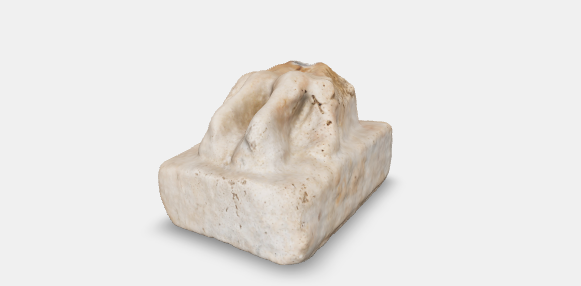This lion’s paw shows damages due to its long permanence underwater and constituted a part of a table support. It is one of the many sculptural elements found in 1972 along the quay of Ripa Puteolana, in the area where a marble workshop was eventually submerged by the sea due to bradyseism.
This small marble artefact shows traces of bioerosion that cover approximately 50% of its surface. Tiny circular holes (pitting) are the external openings of the internal chambers dug by endolithic sponges (family Clionaidae). In some parts where the external surface is missing, numerous sub-spherical cavities can be observed, often confluent with each other, caused by the sponges.

Davidde B., Ricci S., Poggi D., Bartolini M., 2010. Marine bioerosion of stone artefacts preserved in the Museo Archeologico dei Campi Flegrei in the Castle of Baia (Naples), Archaeologia Maritima Mediterranea; 7: 75-115.
Ricci S., Sacco Perasso C., Antonelli, F., Davidde Petriaggi B., 2015. Marine Bivalves colonizing roman artefacts recovered in the Gulf of Pozzuoli and in the Blue Grotto in Capri (Naples, Italy): boring and nestling species. International Biodeterioration & Biodegradation (98) 89 – 100.
Ricci, S., Pietrini, A. M., Bartolini, M., Sacco Perasso, C., 2013. Role of the microboring marine organisms in the deterioration of archaeological submerged lapideous artifacts (Baia, Naples, Italy). International Biodeterioration & Biodegradation 82 (2013) 199-206.
Ricci S., Davidde B., Bartolini M., Priori G. F., 2009. Bioerosion of lapideous objects found in the underwater archaeological site of Baia (Naples). Archaeologia Maritima Mediterranea, 6: 167-188.



